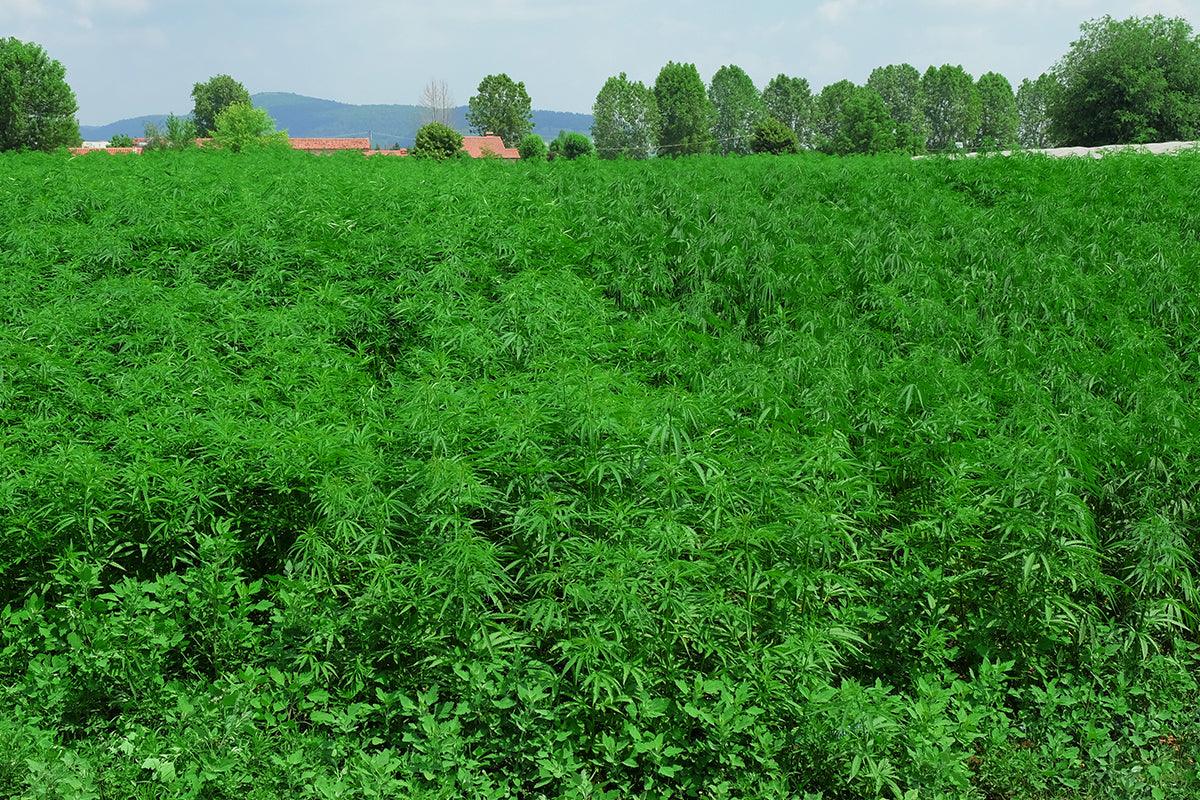The return of a resistant, economical and green fibre
Today more than ever we talk about sustainability, and not just in fashion. Green culture is also spreading in those environments that until now were not particularly interested in the environment, thanks to a general awareness campaign carried out by brands and institutions. The green trend embraces very different types of products and ranges from clothing to accessories, through cosmetics and interior design.
The topic is also increasingly discussed in the world of fashion: the clothing and shoe industry accounts for 8% of global greenhouse gas emissions , for a value equal to 3,990 million tonnes of CO2, with leather at the top to the list of the most polluting materials. According to the Ellen MacArthur Foundation , the textile sector, with its 1.2 billion tons annually, exceeds the sum of emissions from aviation and shipping.
The time has come to reverse course and start taking into consideration more ecological raw materials , which require fewer processes to be transformed. This is why in recent years, thanks to its legalization in many countries around the world, the debate on the use of hemp as a textile fiber has become more intense.
What is hemp?
Hemp is a natural textile fiber extracted from the herbaceous plant of the same name of the cannabis sativa species, which means "useful hemp". It is a plant that flourishes in areas with temperate climates and grows well on most soils . It is a plant with very high yields in terms of harvest, which requires little care and little water.
Hemp is truly an ecological fibre: to grow well it does not require pesticides, herbicides and fertilizers and can reach a height of 2-5 meters in just three months. It has a high yield of fibers extracted per hectare of cultivated land; it can produce 250% more textile fibers than cotton and 600% more than linen, for the same land used.
The cultivation of hemp also has positive aspects for the soil on which it is started: the roots grow up to three meters underground and protect the soil from runoff, preserving the underground structures.
Textile hemp was used for the first time more than 8000 years ago, and its use is attested by the first civilizations that appeared in Asia, the Middle East and China.
Hemp clothes: the textile industry
There is a proverb that attests to how ancient the use of cannabis as a textile fiber is: "One day hemp said to flax: you tear yourself when I refine myself" . Hemp has been used to make clothes and linens, thanks to its high resistance; until the 1960s it was still one of the main fabrics widespread in our country, which exported it in large quantities.
In the 1960s and 1970s there was a turnaround and what was a widespread and profitable textile fiber became a drug, banned from any type of legal trade.
In the common imagination, hemp is a raw, coarse, rigid and inelegant fibre; what is not known is that soft fabrics can be obtained from hemp , which can also be used to make women's clothes. «Linen is certainly a finer fabric» explains Piero Diddi , textile expert at Fibranova and specialized in natural fibres. «But hemp is certainly more resistant and, precisely because it has a larger diameter internal cavity, it is able to absorb humidity better. Furthermore, while linen is especially suitable for the summer months, hemp can be worn all year round , being cool in summer and warm in winter. It must also be said that while a linen garment creases quickly with use, hemp fabrics are more versatile, because the creases that form are gentler. Another important aspect is that of being able to offer a fiber that does not require synthetic chemical treatments and is therefore also anti-allergic. Finally, unlike cotton, there is no genetically modified hemp."
To these numerous advantages we could also add the non-negligible one that hemp, in our country, can potentially be sown, cultivated and transformed without crossing national borders and often not even regional ones: for this reason hemp fabric is the most suitable for in the direction of a short supply chain, and with low environmental impact, also in the textile field.
Often, in addition to clothes made of 100% hemp fibre, there are fabrics on the market made up of hemp and linen or hemp and cotton in variable percentages (55% hemp and 45% cotton, 50% hemp and 50% linen) which allow you to combine the qualities of these three precious fibres.
Even Levi's , the company that made jeans a clothing icon, is ready to approve the use of hemp to make its products . Rumors from America speak of a study in an advanced stage, so much so that last March the company launched jeans and a jacket whose label reported a mix of hemp (31%) and cotton. The collection is called Levi's Wellthreat x Outerknown and also includes t-shirts created from recycled denim and cotton/hemp blends . But within five years, as stated to Business Insider by the innovation manager of Levi Strauss & Co, Paul Dillinger, hemp will be able to be used 100%.
The processing of hemp fiber
The processing of textile fiber is completely mechanical and this brings a great advantage in environmental terms. Not requiring the use of chemicals makes its sustainability real compared to its competitors, just think that a hemp field requires 30% of the water needed to irrigate a cotton field of the same size.
Today the machinery available to the textile industry allows it to produce fairly soft and shiny hemp fibres , also excellent for making the finest fabrics. The texture of pure hemp fabrics resembles that of linen, drawing the eye with its subtle variations in thickness, but it is also versatile and can be mixed with other fibers to create many different looks and make it even more comfortable. The versatility of hemp as a fabric is truly astounding: hemp fibers can be woven alone or blended with other fibers to produce strong, lightweight canvas weaves, in an unlimited range of colors and finishes.
The tensile strength of hemp fiber is eight times that of cotton , which is why hemp has been used to make sails and ropes for the British and American navies for decades. It is hypoallergenic and non-irritating to the skin and , according to some tests, it would be able to kill staphylococcus and other bacteria that come into contact with its surface.






